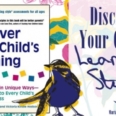I have talked about sign language and why it could be an important addition to our burgeoning homeschool routines.
As homeschoolers I suppose the noise level in our abodes is a constant factor. One of my friends has a lot of children and it has been known for her to leave her 12 year old, the oldest, at home for a hour or so, just so that she can get outside and have some peace and quiet. It was nap time for most of them, and I know, 12 is rather young, what can I say but, this is a desperate homeschooler!
Imagine my amazement when I discovered that there is a whole movement out there that supports and trains mothers to use Sign Language when communicating with their pre-verbal offspring. I was skeptical initially. How can infants possibly learn to sign? They can barely grab a toy or catch a mobile that floats above their heads let alone make structured signs with their teeny-weeny hands that are best for making ink prints in baby books and on t-shirts for grandma. But my guest, Dawn Prochovnic, founder of smalltalklearning.com assured me that indeed they do learn. She cited as an example her young son signing the word “pain” close to his ear and she discovered, on their trip to the doctor’s office for the second time that week, he did have an ear infection after all and wasn’t just a whinny infant.
As we continued with our conversation I realized that sign language has been used to great affect with the monkeys. I really don’t want to talk here about signing monkeys because we are talking about signing babies, but I do want to stress that of course it makes a lot of sense that signing can be taught before children have the ability to verbalise.
My point of reference that keeps tripping me up is how I learned, or should I say, didn’t learn, French, Spanish and Latin at school. We could talk, we were being taught by someone who could also talk… in English… and thus translate for us if we grew befuddled. this is how children learn how to talk isn’t it? By listening, experimenting and eventually verbalizing. It makes sense that deaf children would learn signing without verbal language, so why not infants who can’t talk yet, hearing or non-hearing? Amazing!
Then we started talking about the benefits of signing for everyone not only children. When Mum can sign then she can use it to teach her children and then when the noise level gets unbearable a simple sign that says, “focus” brings everyone up short. This non verbal cue halts the noise and the children are forced to think about how they feel; about what is causing their distress or frustration and the appropriate signs to use to convey what or who is troubling them. With this information they are able to sign it, silently, instead of verbalizing loudly.
Christie Jenkins related to us that hearing loss is the number one health disability in America. She told us that the number of older people experiencing hearing loss who use signing is increasing. She explained that as more and more children learn this method of communication they are actually teaching their parents and grandparents the skills making signing a family experience and an asset for those hard of hearing folks who dwell amongst us and don’t want to wear hearing aids!!
There is another health benefit associated with signing, listen closely: since signing uses a different part of the brain and we stop talking giving the verbal side a break, we actually help to increase the thickening of a part of our brain connected to memory and cognitive skills which is good, thicker grey matter is what we want, it thins as the years progress. So the aging process can be slowed down.
Learning sign language has also been shown to improve reading skills and it has the same benefit as learning a second language, doing those cross word puzzles, Sudoku and meditation.
Christie told us her story of how she created the first sign language video which she says plays like an episode of, “Friends” so I imagine it keeps one’s attention instead of a dry repetition of signs with words flashed up on the screen. In fact we should go to her site and buy it so that we can see for ourselves, signlanguagevideo.com. According to Christie it takes only the memorisation of 167 signs to have a conversation with a deaf person, and her video has over 300. For homeschoolers who already diversify, learning sign language is not a huge burden and children have fun learning it, pick it up even faster than their parents so they are able to teach them something for a change, plus it’s good for the grey matter.
When deciding what form of Sign language to learn both my guests agreed that getting the message across is the most important thing to do. Rather like English with different accents and words for the same thing. I learned, when I arrived on these distant shores that American English and British English have different pronunciations and sometimes the word is different but the message comes across the same, usually! Except when I ask for “water”….I now have to prefix it with the word, “soda.” Quick, what’s the sign for “water”?
Oh, and one more thing, signing can be taught to your pets too so watch out Buddy, my favourite grand-dog, we’ll be doing some brain repair and sign language the next time you come and visit.
“Sit!”
I had to say it as I figured you wouldn’t be able to see my perfect signing!








 Hello I'm Vivienne McNeny, English to the core and I've just put the kettle on so while its boiling let me tell you a little about myself. I was raised in a convent boarding school while my parents diplomatically hosted cocktail parties at foreign Embassies.
Hello I'm Vivienne McNeny, English to the core and I've just put the kettle on so while its boiling let me tell you a little about myself. I was raised in a convent boarding school while my parents diplomatically hosted cocktail parties at foreign Embassies. 







No comments so far!
Leave a Comment